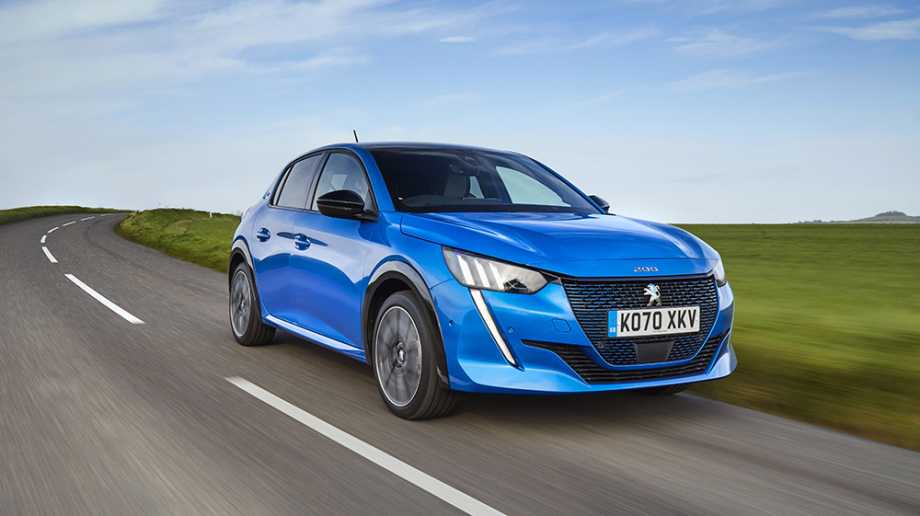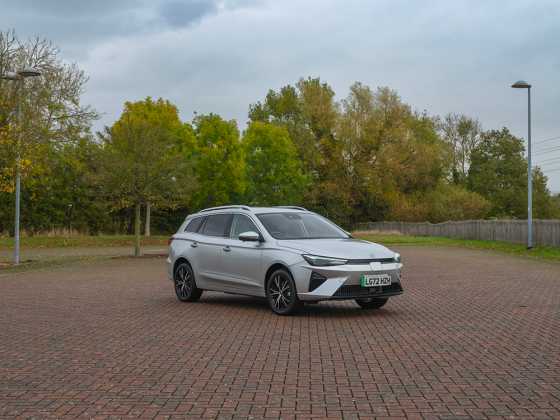Peugeot e-208 GT

An important part of Peugeot's electrification strategy, the e-208 heralds a new era in the French brand's history. Richard Gooding drives the electric hatchback and finds that adding an e-drivetrain to a popular small car will increase its appeal still further
What is it?
As the proliferation of electric vehicles widens, the cost of the technology lessens. It's therefore natural that the choice broadens. A decade ago, there were few 'conventional' or traditional electric small cars on the market. Models such as the Mitsubishi i-MiEV were more niche than normal but fast forward 10 years, and the choice of small electric cars is growing. The PSA Group is leading the charge, with a trio of small EVs, all based on its electrified 'e-Common Modular Platform' (e-CMP). Also offered as petrol or diesel models, the 'multi-energy' chassis was developed to include electric versions from the outset. The all-electric 208 is parent company Peugeot's small EV contender and forms part of a small car that was named the 2020 European Car of the Year.
What range does it have?
The e-208 is second only to the Renault Zoe in the small EV range stakes. The Renault scores the top spot by way of its 238-mile distance, and while the Peugeot's 217 miles number fewer than the Zoe's, they are still very useful.
All of the PSA Group's small electric cars feature the same 100kW electric motor and 50kWh lithium-ion battery, which again, puts them right in the Renault Zoe's firing line. Comparing the Peugeot to price rivals such as the Honda e and Mini Electric is fruitless, as these have much smaller ranges, and are more suited to inner-city habitats. Yes, the Peugeot will deal with the urban cut and thrust easily, too, but it can also stretch its legs on longer distances.
However,. official quoted range figures should always be taken as a guide. In real-world conditions, we found the Peugeot to register a maximum fully charged range of 161 miles over its autumn test period. An efficiency value of 3.8 miles/kWh is commendable, though, and a range of driving modes are available to make the most of the car's energy usage – 'Normal' is for daily use, 'Eco' shifts the priority to range, and 'Sport' moves the focus to performance. Two braking modes also aim to benefit efficiency. The standard setting modulates the set-up to give a sensation similar to engine braking in an ICE car, and the enhanced 'B' mode gives a sharper response and increased deceleration controlled with the accelerator pedal.
How long does it take to charge?
Peugeot has fitted the e-208 with a 7.4kW on-board charger. From a standard domestic 10A/3kWh socket, the electric hatchback can be charged from flat to full in 24 hours. A 7kWh wall box takes that time down to 7.5 hours, while a 100kWh rapid charger will see 80 per cent of the battery's capacity replenished in 30 minutes.
The 'My Peugeot' smartphone app allows drivers to see the progress and the state of vehicle charge, as well as energy consumption statistics. The battery charging cycle can also be activated, stopped and scheduled remotely, as can pre-conditioning functions.
How does it drive?
The e-208 builds on the smart appearance of the standard 208 hatchback and adds a body coloured chequered front grille, gloss black wheel arches, and 'e' badges on the C-pillars. GT trim cars also feature a black-painted roof and mirrors. It's very distinctive, and the e-208 certainly stands out in the crowded small car sector. Inside, the cabin is adventurously styled. The dashboard is split into two halves, the top area forming part of Peugeot's i-Cockpit concept, which places all the important driving features around the driver. The GT has a high technology count, with configurable 3D instruments which look fantastic, as well as a 10-inch capacitive touchscreen infotainment system. Quality is up on Peugeots of the past, with metal toggle switches and carbon-look inlays giving an impression of a more premium car.
With 191-221lb ft of torque, and despite its 1,455kg weight, the e-208 is zippy from standstill, with plenty of performance for navigating city streets as well as more open roads. That performance is delivered in a refined manner, on a par with larger electric cars. Sitting low, the driving position is good and encourages more spirited driving, an experience which the e-208 is happy to impart. Fun to drive, the e-208's dynamics lend it an engaging feel. The small EV's ride is comfortable, too, and the Peugeot absorbs road imperfections well, although noise from the 205/45 R17 tyres is much more present than that from the outside world. The automatic gear selector is easy to use, the shifter just needing a slight nudge backwards to engage the harsher 'B' regenerative braking mode.
What does it cost?
Peugeot has opted to offer the electric 208 in a variety of trims, perhaps to capture a wide range of drivers. The Active Premium is the entry-level model, and at £26,725 (including the UK government Plug-in Car Grant) includes automatic air conditioning, automatic windscreen wipers, electrochrome rear view mirror, LED headlamps and daytime running lights, a seven-inch capacitive colour touchscreen, Peugeot's i-Cockpit dash with 3.5-inch digital instrument display, and 16-inch alloy wheels. Move up to the £27,375 Allure for LED rear lights, dark tinted rear windows, and gloss black inserts on the B-pillar and rear bumper. The £28,025 Allure Premium spec adds a configurable 3D i-Cockpit instrument panel, as well as a 180-degree colour reversing camera.
Choose the £29,975 GT trim of our test car, and you gain a 10-inch capacitive colour touchscreen with 3D navigation and three years of TomTom Live updates, eight-colour interior ambient lighting, front and rear parking sensors, 17-inch ‘Shaw’ alloy wheels. Safety includes both blind spot monitoring and active safety brake (features cyclist, night function and pedestrian functions) systems. The range-topping GT Premium cars have heated front seats, keyless entry, and adaptive cruise control and lane keeping systems, and are priced from £30,975.
As standard, all e-208s feature a centre armrest, an electronic parking brake, four USB sockets, a pre-conditioning function, and an acoustic vehicle alerting system.
How much does it cost to tax?
Under current taxation bands, and in common will all fully electric cars, Peugeot's electric hatchback is exempt from VED charges, both in the first and following years. The zero-emission e-208 also attracts a zero per cent Benefit in Kind (BIK) rate for 2020-2021, rising to one per cent in 2021-2022, and two per cent in 2022-2023.
Why does my fleet need one?
The PSA Group aims to have 100 per cent of its model ranges electrified by 2025 and the family of small EVs are the first, and important, step in those plans. Creating the EV platforms alongside the ICE chassis allowed for more flexibility and has resulted in a brace of easy-to-drive and impressively refined products.
The e-208 has eye-catching style and interior technology, as well as more premium feel than many Peugeots – small or otherwise – before it. A car with suitable appeal for those who enjoy driving, the e-208 successfully blends an 'enthusiast' nature with lower running costs. Not necessarily a cheap proposition, but on a price par with its rivals, the e-208 package is one which is enticingly appealing.









